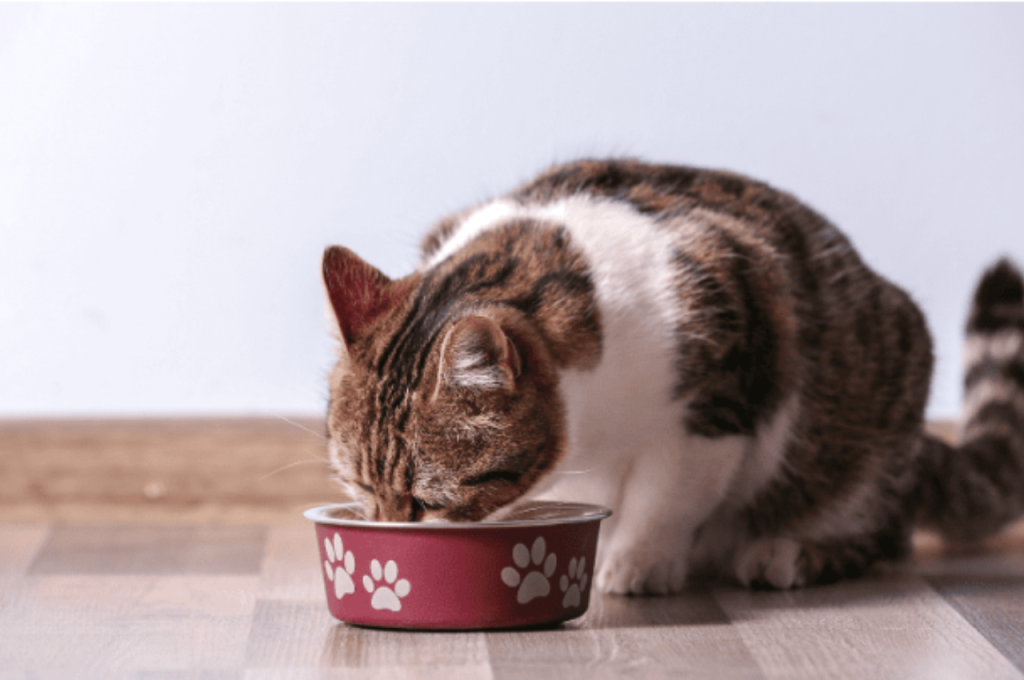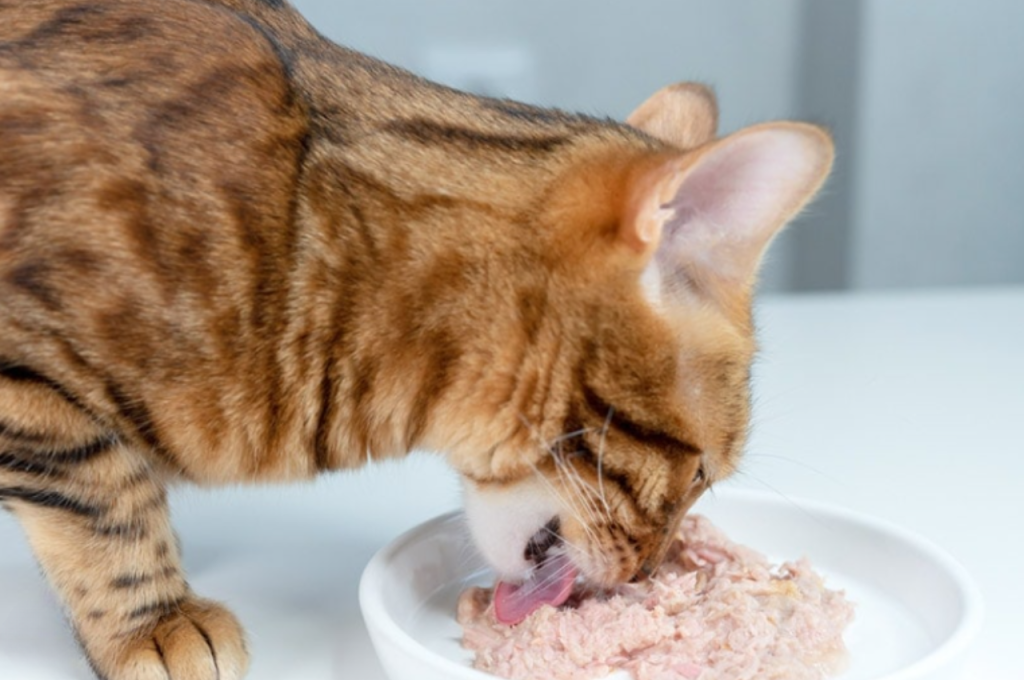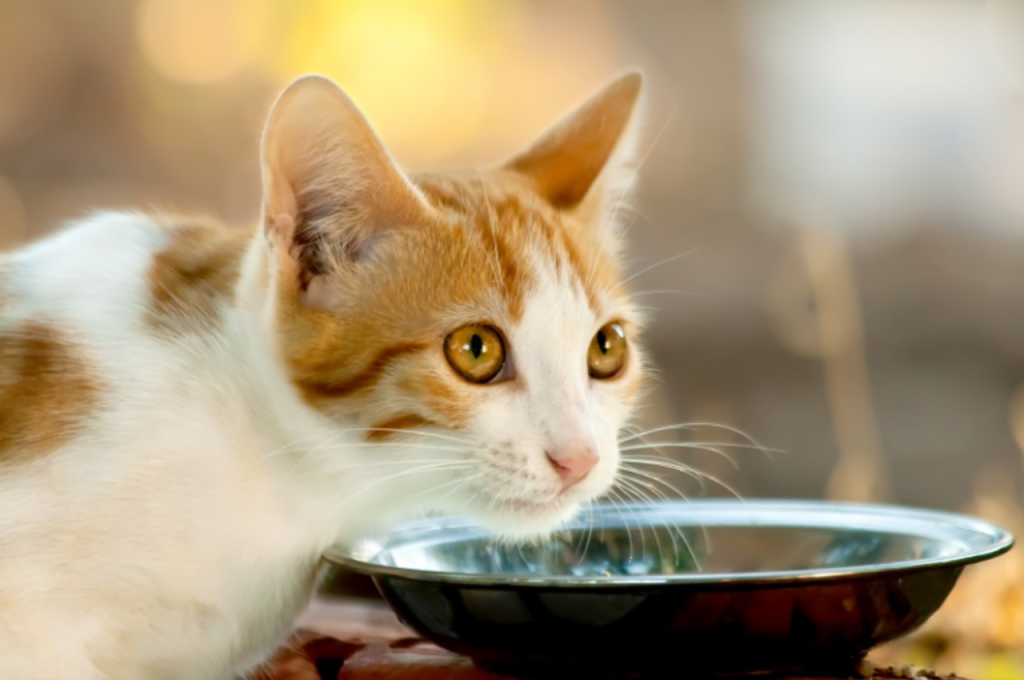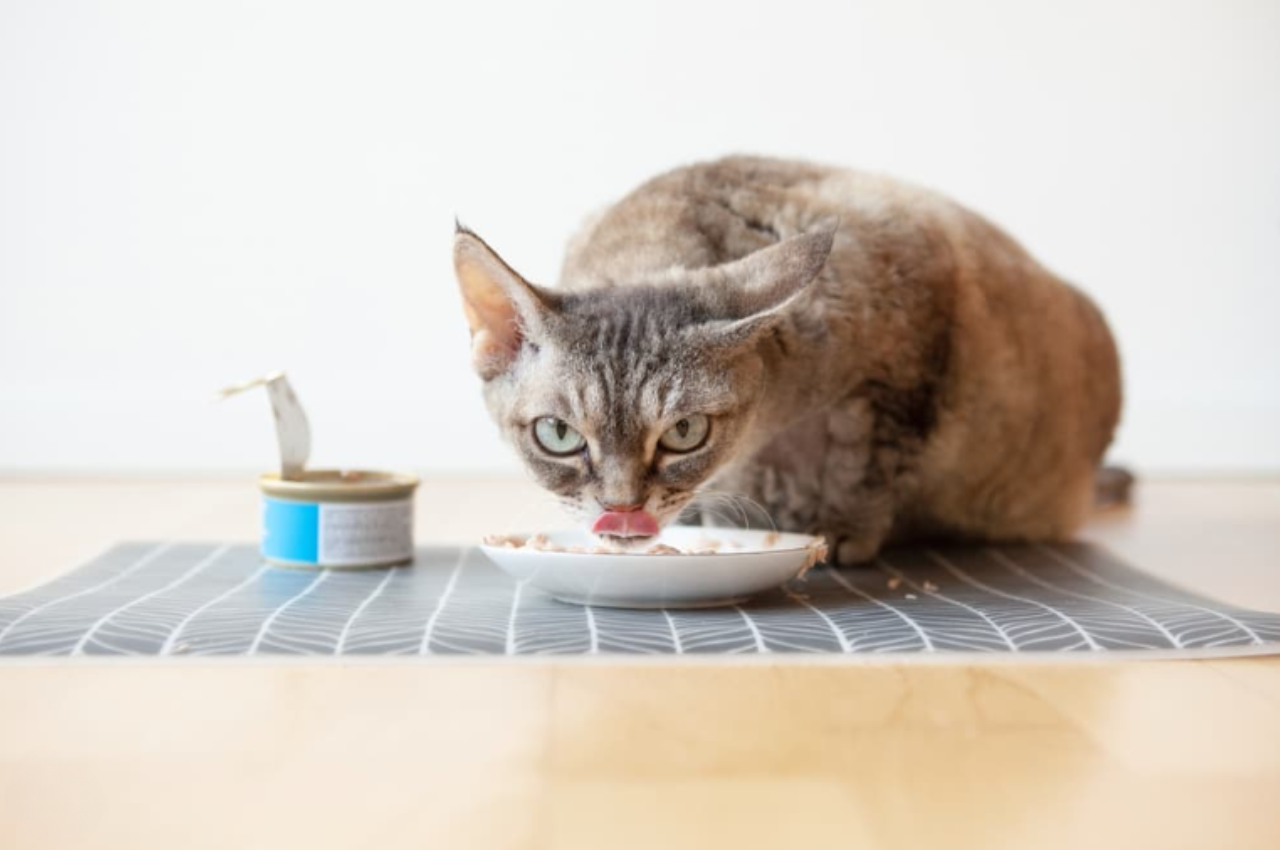Chewy offers a wide selection of cat food, including dry, wet, and grain-free options. They cater to various dietary needs and preferences, ensuring a healthy diet for your feline friend.
With popular brands and convenient delivery, Chewy makes it easy to find the perfect cat food for your pet. Whether your cat prefers seafood flavors, poultry, or a mix of both, Chewy has you covered. Their user-friendly website allows you to quickly browse and order the best cat food for your furry companion.
With Chewy’s reliable service and high-quality products, keeping your cat happy and healthy has never been easier.
Introduction to Feline Nutrition
Cats are obligate carnivores, which means their bodies require a diet that is high in protein and low in carbohydrates. As a cat owner, it’s essential to understand the importance of providing your feline friend with the right nutrition.

A well-balanced diet can help maintain your cat’s health, keep them active, and improve their quality of life. In this blog post, we’ll discuss the key nutrients that should be included in your cat’s diet and why quality food matters.
Why Quality Food Matters for Your Cat
The quality of the food you feed your cat can have a significant impact on their overall health. Cheap, low-quality cat food may contain fillers, by-products, and artificial additives that provide little to no nutritional value. On the other hand, high-quality cat food made with real meat, whole grains, and natural ingredients can provide your cat with the essential nutrients they need to thrive.
Feeding your cat a high-quality diet can help prevent health issues such as obesity, diabetes, and kidney disease. It can also improve their coat, skin, and digestive health.
Key Nutrients In a Cat’s Diet
When it comes to feline nutrition, there are several key nutrients that should be included in your cat’s diet:
| Nutrient | Function | Sources |
| Protein | Builds and repairs tissues, enzymes, and hormones | Meat, fish, poultry, eggs, and dairy |
| Fat | Provides energy, insulation, and aids in nutrient absorption | Meat, fish, poultry, and plant-based oils |
| Taurine | Essential for heart and eye health, and reproductive function | Meat, fish, and poultry |
| Vitamins | Essential for various bodily functions, including immune system health | Fruits, vegetables, and meat |
| Minerals | Helps maintain bone health, fluid balance, and nerve function | Fruits, vegetables, and meat |
It’s important to note that cats require a higher protein intake than dogs or humans due to their unique physiology. They also require certain amino acids, such as taurine, which are only found in animal-based protein sources.
In conclusion, providing your cat with a well-balanced diet that includes high-quality protein, healthy fats, and essential vitamins and minerals is essential for their overall health and well-being. By understanding the key nutrients that should be included in your cat’s diet, you can ensure that your feline friend is getting the nutrition they need to live a long, healthy life.
Decoding The Label: What’s In Chewy Cat Food
This article delves into the ingredients found in Chewy Cat Food. By decoding the label, you can ensure your furry friend is receiving the proper nutrition they need.
As a cat owner, ensuring that your feline friend gets the best nutrition is a top priority. With so many options on the market, it can be difficult to know which cat food to choose. Chewy cat food is a popular choice among pet owners, but what exactly is in it? In this article, we will decode the label of Chewy cat food to give you a better understanding of the ingredients and nutritional content.
Understanding Ingredients
The first step in decoding the label of Chewy cat food is understanding the ingredients. The ingredients are listed in descending order by weight, so the first few ingredients are the most important. Chewy cat food typically includes ingredients such as chicken, fish, and grains like rice and barley.
It’s important to note that ingredients like meat by-products and fillers may also be included, so be sure to check the label carefully.
Analyzing Nutritional Content
After understanding the ingredients, it’s important to analyze the nutritional content of Chewy cat food. This includes looking at the levels of protein, fat, and carbohydrates. Chewy cat food typically contains a high level of protein, which is important for maintaining your cat’s muscle mass.
However, some varieties may also contain a high level of fat, which can lead to obesity if not monitored carefully. It’s important to choose a variety of Chewy cat food that meets your cat’s specific nutritional needs. In conclusion, Chewy cat food is a popular choice among pet owners due to its high-quality ingredients and nutritional content.
By understanding the ingredients and analyzing the nutritional content, you can choose the best variety of Chewy cat food for your feline friend. Be sure to consult with your veterinarian to ensure that your cat is getting the proper nutrition they needs to live a happy and healthy life.
Types of Chewy Cat Food
When it comes to choosing the right cat food for your furry friend, there are several options available. One popular choice is chewy cat food, which offers a variety of benefits for both cats and their owners. In this article, we will explore different types of chewy cat food, including dry vs. wet food and specialized formulas for different needs.
Dry Vs. Wet Food
One of the first decisions to make when selecting chewy cat food is whether to go with dry or wet food. Each type has its advantages and it’s important to consider your cat’s individual needs.
| Dry Food | Wet Food |
| Dry cat food is convenient and easy to store. It helps maintain dental health by reducing tartar buildup. | Wet cat food provides cats with hydration and can be a good option for cats who struggle to drink enough water. |
| Dry food is often more affordable and can be left out for free-feeding. | Wet food tends to have a higher protein content and can be more palatable for picky eaters. |
Specialized Formulas for Different Needs
In addition to considering the texture of chewy cat food, you may want to choose a specialized formula that caters to your cat’s specific needs. Here are some common types of specialized formulas:
- Weight Management: These formulas are designed to help cats maintain a healthy weight and support their overall well-being.
- Sensitive Stomach: If your cat has a sensitive stomach or experiences digestive issues, a specialized formula can help alleviate symptoms.
- Indoor Cat: Indoor cats have different nutritional needs compared to outdoor cats. Look for chewy cat food specifically formulated for indoor cats.
- Kitten: For young kittens, it’s important to choose a formula that provides the necessary nutrients for growth and development.
By considering the different types of chewy cat food available, you can find the best option that suits your cat’s preferences and nutritional needs. Remember to consult with your veterinarian for personalized recommendations based on your cat’s health and specific requirements.
Benefits of High-quality Chewy Cat Food
When it comes to providing the best nutrition for your feline friend, opting for high-quality chewy cat food can make a significant difference in their overall well-being.
Healthier Coat and Skin
- Rich in essential fatty acids like Omega-3 and Omega-6.
- Supports a shiny coat and healthy skin.
- Reduces shedding and minimizes skin issues.
Improved Digestion and Health
- Contains high-quality protein sources for easy digestion.
- Enhances nutrient absorption for better health.
- Reduces the risk of digestive problems and allergies.
Feeding Guidelines
Feeding your cat the right amount of food is crucial for their health and well-being. By following proper feeding guidelines, you can ensure that your feline friend receives the nutrition they need to thrive.
Here are some essential factors to consider when it comes to feeding your cat, from determining the right portion to the frequency and timing of meals.
Determining The Right Portion
Determining the appropriate portion size for your cat depends on several factors, including their age, weight, activity level, and overall health. It’s important to follow the feeding recommendations provided on the packaging of the chewy cat food. Additionally, consulting with your veterinarian can help you determine the ideal portion size for your cat based on their specific needs.
Frequency and Timing of Meals
Establishing a consistent feeding schedule is essential for your cat’s overall well-being. Depending on their age and individual preferences, most cats thrive on being fed two meals per day. It’s also important to consider the timing of the meals, ensuring that they are spaced out appropriately to prevent overeating or hunger between meals.
Catering to Picky Eaters
Catering to picky eaters can be a challenge, especially when it comes to finding the right cat food. Felines are notorious for their selective taste buds, often turning their noses up at new or unfamiliar foods. If you’re a cat owner, you understand the struggle of trying to entice your furry friend to eat. Fortunately, there are ways to navigate this common issue, and one effective solution is transitioning to chewy cat food.

Tips to Entice Your Cat
When it comes to enticing your cat to try a new food, it’s essential to approach the transition with patience and creativity. Here are some tips to help you pique your cat’s interest:
- Introduce new flavors gradually to prevent overwhelming your cat’s palate.
- Experiment with different textures and consistencies to discover your cat’s preferences.
- Offer a variety of protein sources, such as chicken, fish, and turkey, to appeal to your cat’s natural instincts.
- Use interactive feeding toys or puzzles to make mealtime engaging and enjoyable.
Transitioning to Chewy Cat Food
Transitioning your cat to chewy cat food can be a smooth process with the right approach. Follow these steps to ensure a successful switch:
- Gradually mix increasing amounts of chewy cat food with your cat’s current food over the course of 7-10 days.
- Observe your cat’s response and adjust the ratio based on their acceptance of the new food.
- Provide a consistent feeding schedule to help your cat adapt to the new food’s taste and texture.
- Ensure that your cat has access to fresh water at all times to support their transition to chewy cat food.
Safety and Storage
Caring for your feline friend means ensuring their food is not only delicious, but also safe and fresh. Properly storing your cat’s food is essential for maintaining its quality and safety.
In this section, we’ll explore the best practices for keeping your chewy cat food fresh and safe, as well as the proper storage methods to ensure the well-being of your pet.
Keeping Food Fresh
Proper storage is crucial for maintaining the freshness of your cat’s food. When exposed to air and moisture, dry cat food can lose its flavor and nutritional value. To preserve its freshness, store the food in its original packaging or in an airtight container. Additionally, consider keeping the food in a cool, dry place away from direct sunlight.
Best Practices for Food Safety
Ensuring the safety of your cat’s food is paramount for their health. Always check the expiration date on the packaging to guarantee that the food is fresh and safe for consumption. Furthermore, refrain from mixing old and new batches of food, as this can lead to contamination. Additionally, wash your hands before and after handling the cat food to prevent the spread of bacteria.
Choosing The Right Chewy Cat Food
When it comes to providing the best nutrition for your feline friend, choosing the right chewy cat food is crucial. With a myriad of options available, it’s important to consider factors such as life stage, lifestyle, and consulting with a veterinarian to ensure you’re making the best choice for your cat’s health and well-being.
Considering Life Stage and Lifestyle
Cats have different nutritional needs at various stages of their lives. Kittens require food that supports their rapid growth and development, while adult cats need a balanced diet to maintain their overall health. Senior cats may benefit from specialized formulas to support aging joints and maintain a healthy weight.
Consulting With a Veterinarian
A veterinarian can provide personalized recommendations based on your cat’s specific needs, health concerns, and dietary preferences. They can also help identify any dietary sensitivities or allergies, ensuring that the chosen chewy cat food is suitable for your cat’s overall well-being.
The Environmental Impact of Cat Food
Chewy cat food addresses the environmental impact by offering sustainable options. The brand focuses on responsibly sourced ingredients and eco-friendly packaging. Choosing Chewy cat food helps reduce your pet’s carbon footprint while providing nutritious meals for your feline friend.
Sustainability In Cat Food Production
Sustainability is a key consideration in the production of chewy cat food. Many leading cat food manufacturers are prioritizing sustainable sourcing of ingredients, aiming to minimize environmental impact.
By using sustainable farming practices and supporting local farmers, these companies are working to reduce their carbon footprint and promote biodiversity.
Eco-friendly Packaging and Practices
Eco-friendly packaging and sustainable practices play a crucial role in mitigating the environmental impact of cat food. Companies are increasingly utilizing biodegradable and recyclable packaging materials, reducing waste and promoting responsible disposal. Additionally, some manufacturers are implementing energy-efficient production processes and exploring innovative methods to minimize water usage in manufacturing facilities.
Common Myths About Cat Food Debunked
In debunking common myths about cat food, Chewy cat food stands out as a reliable source of nutritional information. Contrary to popular misconceptions, Chewy offers a wide selection of high-quality cat food options tailored to meet feline dietary needs. With Chewy, pet owners can confidently provide their cats with balanced and wholesome meals, dispelling myths surrounding cat nutrition.
Grain-free Diets: Are They Necessary?
There’s a common misconception that cats require a grain-free diet for optimal health. However, grains can actually be a valuable source of essential nutrients for felines, including fiber and carbohydrates. While some cats may benefit from a grain-free diet due to specific dietary sensitivities, it’s not a universal necessity.
Raw Diets: Benefits and Risks
Raw diets for cats have gained popularity in recent years, with proponents touting their potential benefits. However, it’s important to weigh the benefits against the risks.
While raw diets can provide cats with a more natural and biologically appropriate source of nutrition, they also pose potential risks in terms of bacterial contamination and nutrient imbalances. It’s crucial to consult with a veterinarian before transitioning a cat to a raw diet.
Supplementing Chewy Cat Food
Caring for your feline companion’s health involves more than just providing a balanced diet. Supplementing Chewy cat food can help address specific nutritional needs and support your cat’s overall well-being.
When to Add Supplements
- Pregnant or Nursing Cats: Require extra nutrients.
- Senior Cats: May benefit from joint support supplements.
- Cats with Health Conditions: Consult a vet for tailored supplements.
Choosing The Right Supplements
- Consult a Vet: Before adding any supplements.
- Look for Quality: Ensure supplements are from reputable brands.
- Consider Specific Needs: Address any deficiencies or health issues.
Testimonials and Success Stories
One of the most reliable ways to gauge the effectiveness of a product is through the experiences of those who have already tried it. Chewy Cat Food has garnered numerous testimonials from cat owners who have witnessed remarkable transformations in their feline friends’ health. These real-life stories serve as a testament to the quality and effectiveness of Chewy Cat Food.
Before and After Health Transformations
Before diving into the testimonials, it is important to understand the incredible health transformations that cats have experienced after switching to Chewy Cat Food. Many cat owners have reported significant improvements in their pets’ overall well-being, including:
- Shiny and lustrous coats
- Increased energy levels
- Improved digestion
- Healthy weight management
- Enhanced immune system
These positive changes not only contribute to the longevity of cats but also enhance their quality of life. Now, let’s take a look at some of the inspiring testimonials shared by cat owners:
| Testimonial | Cat Owner |
| “My cat, Whiskers, used to have a dull and unkempt coat. After switching to Chewy Cat Food, his fur has become incredibly soft and shiny. I can’t believe the difference it has made!” | Emily Johnson |
| “Before trying Chewy Cat Food, my cat, Oliver, struggled with frequent digestive issues. Since incorporating it into his diet, he has had fewer tummy troubles and is much happier overall.” | Robert Thompson |
| “I had been searching for a cat food that would help my overweight feline friend, Max, shed some pounds. Chewy Cat Food not only helped him reach a healthier weight but also improved his overall vitality. He is like a new cat!” | Sarah Davis |
These testimonials are just a glimpse of the many success stories shared by cat owners who have witnessed the positive impact of Chewy Cat Food on their furry companions. The consistent improvement in the health and well-being of cats is a testament to the exceptional quality and nutritional value of Chewy Cat Food.
Conclusion: Committing to Your Cat’s Health
Prioritizing your cat’s health includes selecting high-quality chewy cat food packed with essential nutrients. Opt for brands offering balanced formulas to support your feline friend’s overall well-being. Make a commitment to your cat’s health by choosing the best chewy cat food options available.
Recap of Key Points
Chewy cat food is a great way to ensure your cat’s health and happiness. In this blog post, we’ve covered many key points to consider when choosing the right chewy cat food for your feline friend. We’ve talked about the importance of high-quality ingredients, the benefits of wet versus dry food, and the various types of cat food available on the market. Remember, the health of your cat is directly related to the food they eat, so it’s crucial to make the right choices.
Taking The Next Steps
Now that you have a better understanding of what to look for in chewy cat food, it’s time to take action. Start by reading the labels of the cat food you currently have and make sure they meet the standards we’ve discussed. If not, consider switching to a higher-quality brand. Additionally, it’s important to monitor your cat’s behavior and health after transitioning to a new food. Keep an eye out for any changes in their appetite, energy levels, and overall well-being.

In conclusion, choosing the right chewy cat food is essential for ensuring your cat’s health and happiness. By following the guidelines we’ve discussed and taking the necessary steps, you can make sure your cat is receiving the nutrients they need to thrive. Remember, your cat is an important member of your family, and committing to their health is a crucial part of being a responsible pet owner.
Conclusion
To sum up, Chewy Cat Food offers a convenient and nutritious option for cat owners. With its soft and chewy texture, it is easy for cats to consume and digest. The wide range of flavors and ingredients cater to different dietary needs, ensuring that every cat can find a suitable option.
Remember to consult with your veterinarian to choose the best chewy cat food for your furry friend.
